Key takeaways
- Understanding lighting, particularly natural light, is essential for creating mood and depth in portrait photography.
- Effective communication and patience with subjects can lead to more relaxed and genuine expressions during shoots.
- Preparation and adaptability are crucial; organizing gear and being ready for unexpected challenges enhances the photography experience.
- Personal growth in photography reflects deeper connections with subjects, illustrating that art and personal development are intertwined.
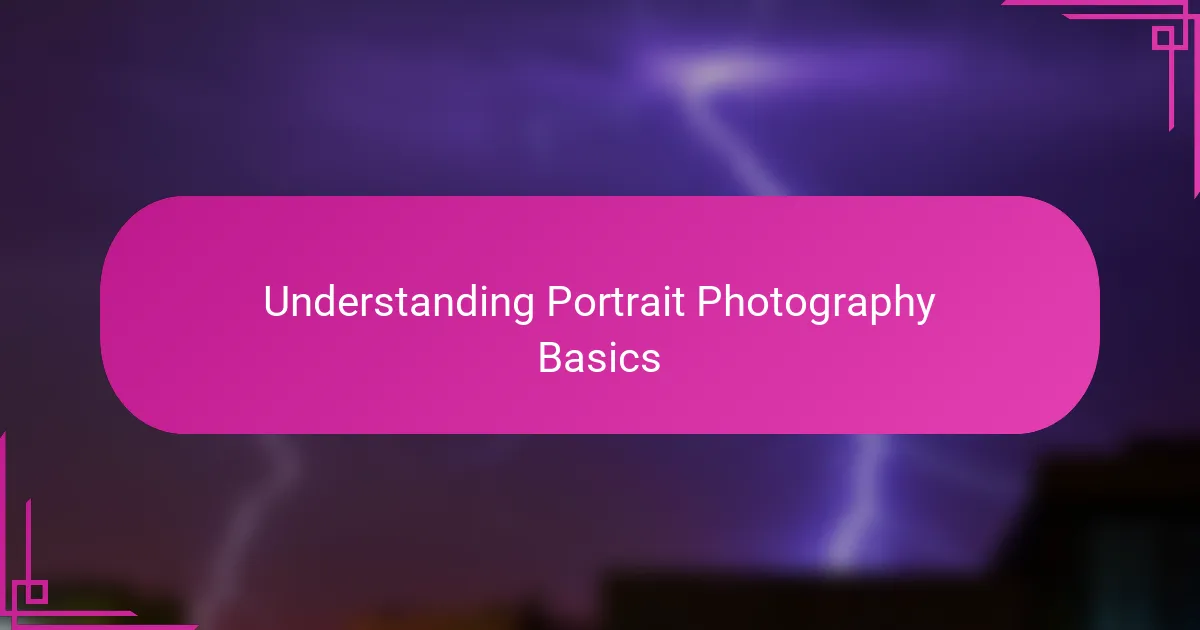
Understanding Portrait Photography Basics
When I first dove into portrait photography, I realized that understanding lighting was the key to capturing personality. How can you truly reveal someone’s character without the right light shaping their face? It’s fascinating how a soft shadow or a gentle highlight can completely change the mood of an image.
Focusing on the eyes came as a revelation for me. I remember struggling to keep sharpness there, but once I got it right, the portraits suddenly felt alive. Isn’t it amazing how eyes can tell stories without words? That connection between the camera and the subject’s gaze is what makes portraits so powerful.
Composition also played a bigger role than I initially expected. Placing the subject thoughtfully within the frame creates balance and draws the viewer’s attention exactly where I wanted it. It made me think: am I merely taking a picture, or am I crafting an experience for the viewer to enter? This basic understanding shifted my entire approach to portrait photography.

Choosing the Right Equipment
Choosing the right equipment felt like picking the perfect set of tools for a new craft. I quickly learned that a versatile lens, like a 50mm prime, was my best friend for portraits—it allowed me to capture crisp details without overwhelming my subject. Have you ever noticed how the lens you use subtly influences the story your photo tells? That was an eye-opener for me.
The camera body, while important, didn’t need to be top-of-the-line to start. I found that understanding my camera’s settings and how it handled light mattered more than having the latest model. It was a relief to realize that my skill could outweigh the gear, at least in the beginning.
Lighting equipment, on the other hand, was another story. Investing in a simple reflector made a surprising difference, softening harsh shadows and adding warmth. I remember one session where shifting a reflector changed the entire vibe, making my subject more relaxed and natural. Isn’t it amazing how a little light adjustment can transform a portrait from flat to full of life?
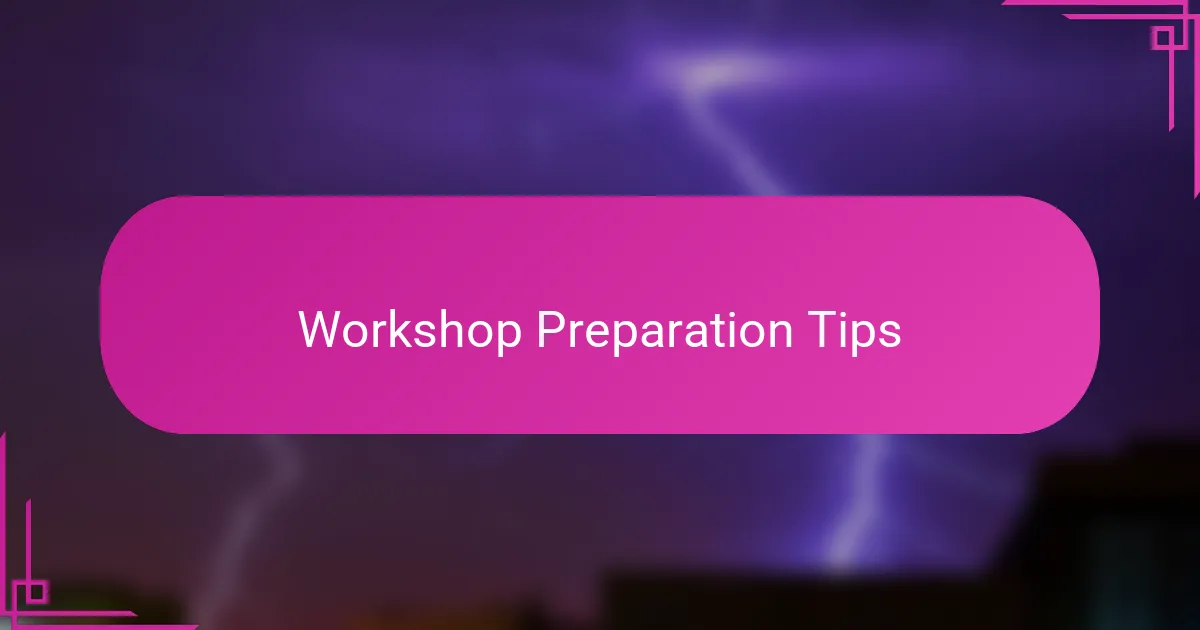
Workshop Preparation Tips
Preparing for the workshop, I found that organizing my gear ahead of time eased a lot of stress. Have you ever felt rushed trying to pack at the last minute? With my camera, lenses, and reflectors ready the night before, I arrived feeling confident and focused instead of frazzled.
I also made a point to review some portrait photography techniques before the workshop. This refresher gave me a mental checklist during the sessions, helping me to absorb new tips without losing track of the basics. It made me wonder—how much more rewarding would the experience be if you come prepared with a solid foundation?
Another tip I swear by is practicing patience with yourself and your subjects. Before the workshop, I rehearsed ways to make people feel comfortable in front of the camera. That extra effort paid off during group shoots, where relaxed expressions and genuine moments felt like magic. Doesn’t it feel great when your preparation helps others open up so naturally?
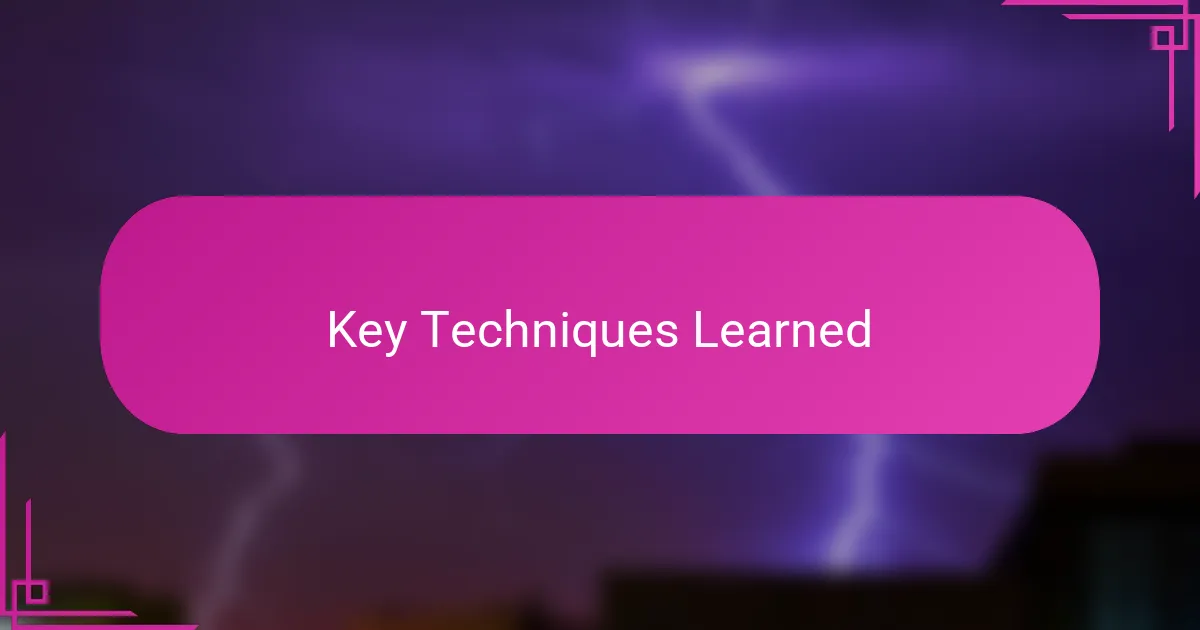
Key Techniques Learned
One technique that truly stuck with me was mastering natural light. I found myself experimenting with the golden hour—those magical moments just after sunrise or before sunset when light is soft and warm. Have you ever noticed how this light makes skin tones glow? It completely changed how I approached outdoor portraits, making them feel more intimate and alive.
Another key skill was learning how to guide my subjects with gentle prompts. Early on, I often hesitated, worried about interrupting their natural expressions. But the workshop showed me that simple questions or subtle direction could unlock genuine emotions. Isn’t it fascinating how a well-timed comment can turn stiffness into comfort and authenticity?
Lastly, I absorbed the power of background selection and depth of field control. I used to overlook the edges of my frame, but now I realize how a blurred background can isolate the subject and eliminate distractions. This technique felt like adding a secret ingredient that makes portraits pop, focusing the viewer’s eye exactly where it belongs. Have you tried playing with aperture settings to achieve that creamy bokeh? It’s addictive.
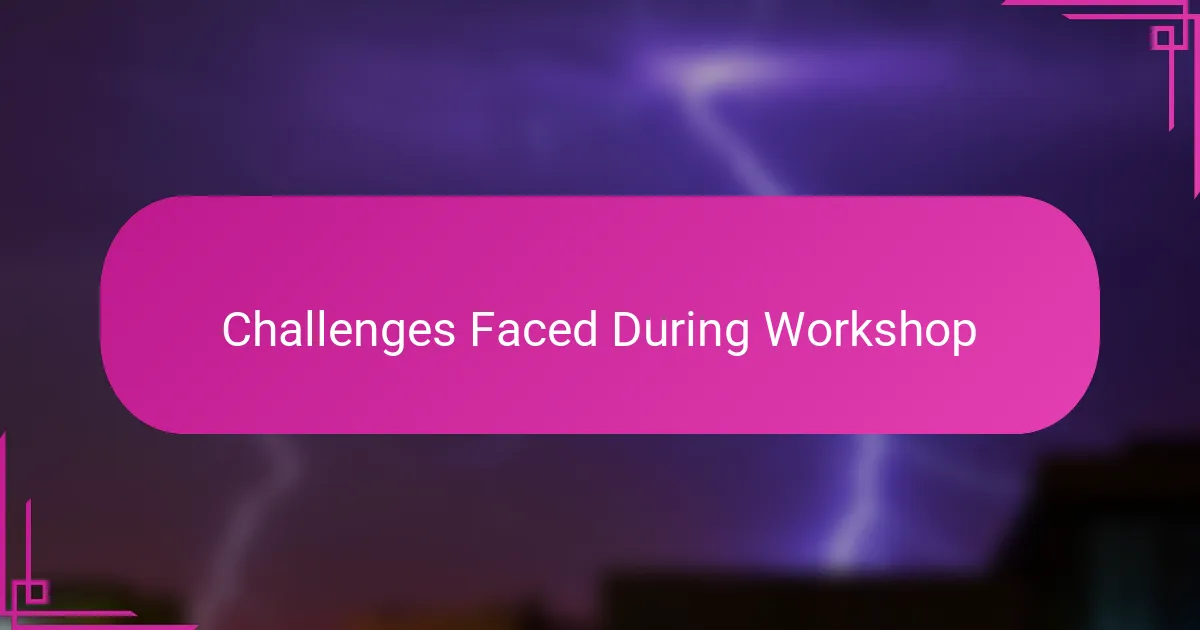
Challenges Faced During Workshop
One challenge that caught me off guard was managing the fluctuating natural light during outdoor shoots. I remember one session where the sun kept playing hide-and-seek behind clouds, making exposure tricky. Have you ever tried to adjust settings on the fly, only to realize you missed the perfect moment? It was frustrating but taught me the importance of quick adaptability.
Another hurdle involved building rapport with the subjects quickly. Sometimes, despite my best efforts, people remained stiff or self-conscious in front of the camera. I wondered—how could I make them feel safe and at ease in such a short time? The workshop helped me discover subtle ways to break the ice, turning awkwardness into genuine smiles.
Lastly, coordinating technical details under time pressure was a real test. Balancing camera settings, lighting adjustments, and composition while staying mindful of the subject’s comfort felt overwhelming at times. Have you found yourself juggling so many things that it’s hard to stay present? This experience taught me that practice and patience are key to managing those moments smoothly.

Applying Skills in Real Sessions
Putting those workshop skills to use during real portrait sessions was both exhilarating and humbling. I remember my first shoot afterward—I was hyper-aware of every setting, every angle, trying to apply what I’d learned about light placement and eye focus. Have you ever felt that rush, where your knowledge suddenly has to dance with real people, not just theory?
What struck me most was how much patience and presence the process demands. Despite all the technical prep, connecting with the subject still felt like an art in itself. I asked myself, how do I keep the session natural and engaging without turning into a strict director? Finding that balance became my new challenge—and, honestly, one of the most rewarding parts.
The practical experience also revealed nuances no workshop could teach completely. For example, improvising when the light shifted unexpectedly or when a subject’s mood changed mid-shoot required confidence I hadn’t fully built before. Those moments taught me that applying skills isn’t just about technique—it’s about staying adaptable and truly listening. Have you noticed how the best portraits often come from spontaneous interactions?
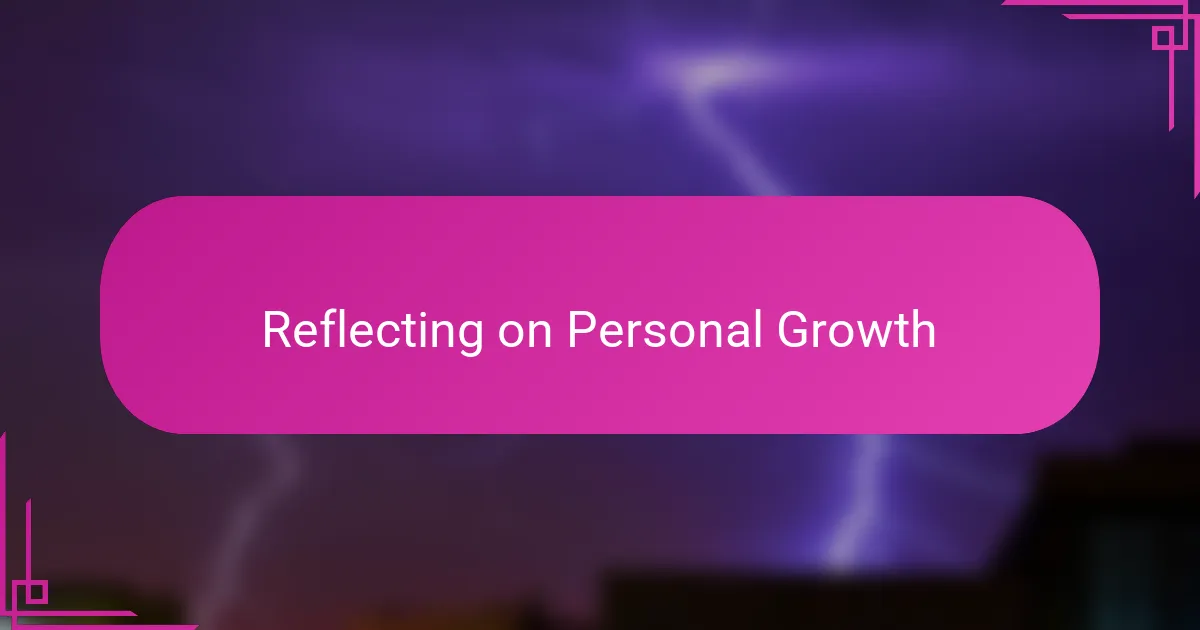
Reflecting on Personal Growth
Looking back, I realize the workshop wasn’t just about improving technical skills—it was a journey in patience and self-awareness. Have you ever noticed how stepping outside your comfort zone can reveal strengths you didn’t know you had? I certainly found myself growing not only as a photographer but as a person willing to embrace challenges.
One moment stands out to me: struggling with a difficult shoot, I nearly gave up, but pushing through made me see progress in ways a simple success never could. That taught me the value of persistence and the importance of learning from mistakes, rather than fearing them. Isn’t it remarkable how setbacks often become our greatest teachers?
Most importantly, reflecting on my growth reminded me that photography is as much about connecting with others as it is about capturing images. The more open and present I became, the deeper the portraits felt. Do you think growth in art always mirrors growth in life? For me, this workshop was proof that both go hand in hand.